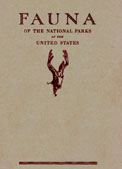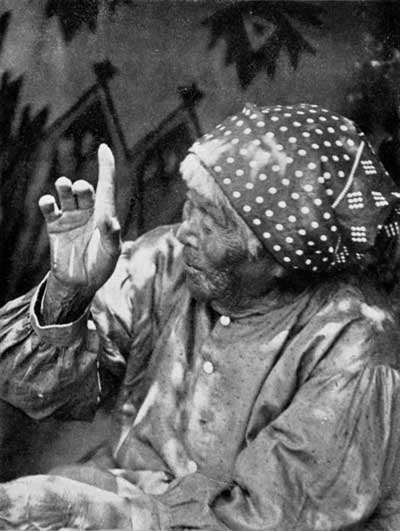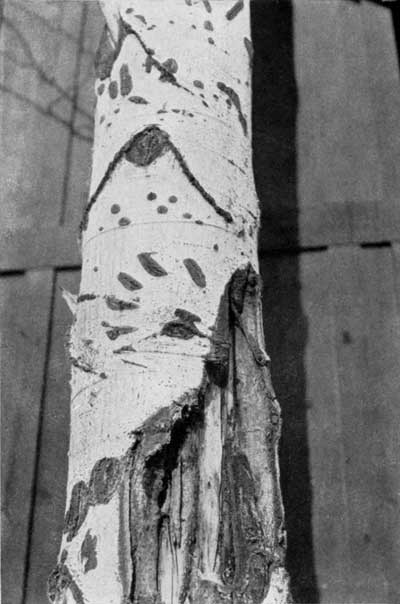![]()

Fauna Series No. 1
![]() Methods
Methods
Fauna of the National Parks
of the United States
THE PRIMITIVE WILD-LIFE PICTURE
It is true that flora and fauna and even geography itself have been in a state of flux since the continents first rose from the sea, and in this sense there is no one wild-life picture which can be called the original one. Nevertheless, practical considerations determine one point in time which satisfies wild-life-survey requirements as regards a particular area. This is the period between the arrival of the first whites and the entrenchment of civilization in that vicinity. We can know little of the other pictures that preceded this period and violent changes occurred immediately afterward. Consider this from another viewpoint. The rate of alteration in the faunal structure has been so rapid since, and relatively so slow before, the introduction of European culture that the situation which obtained on the arrival of the settlers may well be considered as representing the original or primitive condition that it is desired to maintain.
When it comes to defining the original status of each animal in a region, allowance must be made for cyclical fluctuations in animal populations. In some species the high and low ebbs in density per unit area may be extreme even under normal conditions. However this occurs more noticeably in the smaller forms with a high birth rate.
Along with learning what species comprised the fauna of the area, what the abundance of each was, and what range was occupied at each season, as much information as possible should be assembled on the vegetative cover. Where the plant life has changed as to composition and distribution, it would be fruitless to hope that the animal life could remain the same.
Obstacles to reconstructing the primitive picture are great in any instance, but they increase in places where the pioneer period dates very far back. The material evidence was largely perishable and may have been completely destroyed. Accounts that have passed from mouth to mouth are likely to be worse than useless. People who left any written record were few, and of these still fewer could be counted reliable observers.

FIGURE 5. – Maria, last of the Yosemites, told the
party about early wild-life conditions
in the valley. The records of
first-hand observations are important and should be sought before it is
too late.
Photograph taken July 7, 1929, Yosemite. Wild Life Survey
No. 324
Yet every small fragment of fact that can be sifted out and added to the mosaic is of value and will become much more so all the time. Because the chance of completing these early pictures grows less each year, this part of the survey should be undertaken immediately and pushed as rapidly as possible. In the West some of the pioneers who first saw the regions that are now national parks are living, so that first-hand statements can still be secured. The record of primitive conditions should be carefully substantiated as it is drawn up. The park museums are the proper repositories for accumulated evidence.
Old game trails, salt licks, and wallows tell a story that can be recorded photographically. Shed antlers and old horns, as well as other skeletal remains, give clues to the type of habitat occupied under natural conditions and to the original range of species which may have been extirpated since or forced to change their haunts. 3 Evidence of this sort should be photographed in place, and both specimens and pictures placed in the local museum.

FIGURE 6. – Claw marks on trees may tell the story
of bears that have since disappeared.
Photograph taken at Tower Falls
Ranger Station, Yellowstone, July 14, 1931. Wild Life Survey No.
1929
References to animal life in early writings should be treated in the same way.4 Where the original letter or document can not be secured, photostatic copies, accompanied by full data on the source, will serve very well. Pertinent material may be gleaned from newspapers, periodicals, scientific reports, travel accounts, and even from historical fiction built around frontier life. In this connection, maps, paintings and drawings by both white men and Indians should not be overlooked. Just as with the restoration of Williamsburg, the search for clues to the restoration of the early picture may lead almost anywhere, not excepting the Old World.
3 Mammal Remains from Two Prehistoric Village Sites in New Mexico and Arizona, by Lyon, Marcus Ward, Jr., Proc. U. S. Nat. Mus., vol. 31, 1907, pp. 647-649.
4 U. S. Geological Survey of Montana, Idaho, Wyoming, and Utah, 1872, by Hayden, F. V., 1873.
Top
Last Modified: Tues, Feb 1 2000 07:08:48 pm PDT
http://www.cr.nps.gov/history/online_books/fauna1/fauna2b.htm
![]()